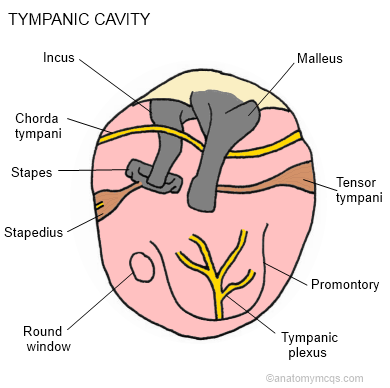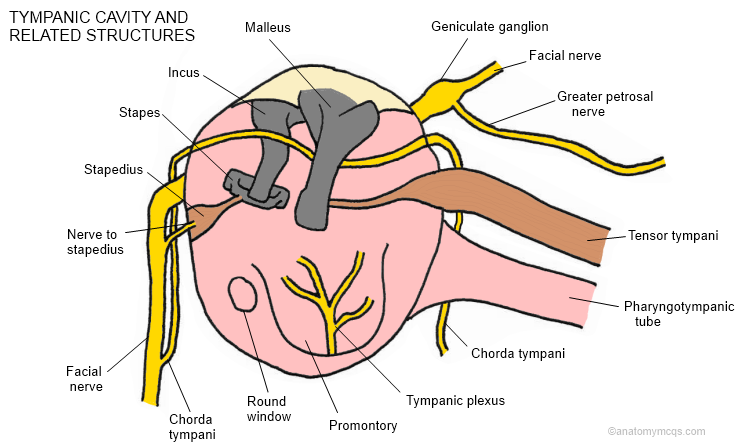Question #687
Considering the tympanic cavity, which of the following statements is correct?
The middle ear, or tympanic cavity, is located within the petrous part of the temporal bone between the tympanic membrane on the lateral wall and the oval window on the medial wall.
The three ossicles are located in the middle ear: malleus, incus and stapes. Along with two small muscles: tensor tympani and stapedius.
It is innervated by the glossopharyngeal nerve via the tympanic plexus which is located on the medial wall overlying the promontory, a bulge produced by the first turn of the cochlea.
The facial nerve does not innervate the middle ear but rather passes through the facial canal on the medial wall before exiting through the stylomastoid foramen. It gives off two branches within the cavity: firstly the nerve to stapedius and secondly the chorda tympani which crosses the tympanic membrane from posterior to anterior. The greater petrosal nerve is also a branch of the facial nerve but it branches off at the geniculate ganglion and re-enters the middle cranial fossa before the facial nerve enters the middle ear.
The lesser petrosal nerve is a branch of the glossopharyngeal nerve which can be seen exiting the tympanic plexus before passing through its own hiatus.
The vestibulocochlear nerve passes directly to the inner ear and does not reach the middle ear.
As with the nasal cavity, the middle ear is a site of anastomosis between the internal carotid artery and the external carotid artery via the carticotympanic and the stylomastoid arteries respectively.

